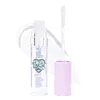What's inside
What's inside
 Key Ingredients
Key Ingredients

 Benefits
Benefits

 Concerns
Concerns

 Ingredients Side-by-side
Ingredients Side-by-side

Polybutene
Diisostearyl Malate
EmollientPentaerythrityl Tetraisostearate
EmollientPolyglyceryl-2 Triisostearate
EmulsifyingSilica Dimethyl Silylate
EmollientCaprylic/Capric Triglyceride
MaskingSimmondsia Chinensis Seed Oil
EmollientHelianthus Annuus Seed Oil
EmollientTocopheryl Acetate
AntioxidantPhenoxyethanol
PreservativePentaerythrityl Tetra-Di-T-Butyl Hydroxyhydrocinnamate
AntioxidantParfum
MaskingLycium Chinense Fruit Extract
AntioxidantTocopherol
AntioxidantBenzyl Benzoate
AntimicrobialPolybutene, Diisostearyl Malate, Pentaerythrityl Tetraisostearate, Polyglyceryl-2 Triisostearate, Silica Dimethyl Silylate, Caprylic/Capric Triglyceride, Simmondsia Chinensis Seed Oil, Helianthus Annuus Seed Oil, Tocopheryl Acetate, Phenoxyethanol, Pentaerythrityl Tetra-Di-T-Butyl Hydroxyhydrocinnamate, Parfum, Lycium Chinense Fruit Extract, Tocopherol, Benzyl Benzoate
Hydrogenated Polyisobutene
EmollientOctyldodecanol
EmollientPolybutene
Simmondsia Chinensis Seed Oil
EmollientHelianthus Annuus Seed Oil
EmollientSodium Hyaluronate
HumectantLavandula Angustifolia Oil
MaskingCamellia Japonica Seed Oil
EmollientCaprylic/Capric Triglyceride
MaskingSalicornia Herbacea Extract
Skin ConditioningRosa Damascena Flower Oil
MaskingButylene Glycol
HumectantCaprylyl Glycol
EmollientPentaerythrityl Tetraisostearate
EmollientTrehalose
HumectantCollagen
MoisturisingSodium Chondroitin Sulfate
Skin ConditioningSilica Dimethyl Silylate
EmollientHexylene Glycol
EmulsifyingPhenoxyethanol
PreservativeHydrogenated Polyisobutene, Octyldodecanol, Polybutene, Simmondsia Chinensis Seed Oil, Helianthus Annuus Seed Oil, Sodium Hyaluronate, Lavandula Angustifolia Oil, Camellia Japonica Seed Oil, Caprylic/Capric Triglyceride, Salicornia Herbacea Extract, Rosa Damascena Flower Oil, Butylene Glycol, Caprylyl Glycol, Pentaerythrityl Tetraisostearate, Trehalose, Collagen, Sodium Chondroitin Sulfate, Silica Dimethyl Silylate, Hexylene Glycol, Phenoxyethanol
Ingredients Explained
These ingredients are found in both products.
Ingredients higher up in an ingredient list are typically present in a larger amount.
This ingredient is an emollient, solvent, and texture enhancer. It is considered a skin-softener by helping the skin prevent moisture loss.
It helps thicken a product's formula and makes it easier to spread by dissolving clumping compounds.
Caprylic Triglyceride is made by combining glycerin with coconut oil, forming a clear liquid.
While there is an assumption Caprylic Triglyceride can clog pores due to it being derived from coconut oil, there is no research supporting this.
Learn more about Caprylic/Capric TriglycerideHelianthus Annuus Seed Oil is the oil derived from the seeds of a Sunflower. Sunflower seed oil is non-fragrant. It is an emollient, meaning it helps to soften the skin.
Sunflower seed oil contains many fatty acids. The fatty acids found in sunflower seeds include (from highest amount to least): linoleic acid, myristic acid, palmitic acid, stearic acid, arachidic acid, oleic acid, and linolenic acid.
These fatty acids help the skin create ceramides. Ceramides play a role in repairing the skin barrier.
Helianthus Annuus Seed Oil helps moisturize the skin. This in turn helps the skin look more rejuvenated and smoother.
Sunflowers are rich in vitamin E.
Historians believe Indigenous cultures of North America domesticated sunflowers before corn. Thus they relied on sunflower oil for a variety of uses. One such use is moisturizing skin and hair.
Sunflower seed oil may not be fungal acne safe. We recommend speaking with a professional if you have any concerns.
Learn more about Helianthus Annuus Seed OilPentaerythrityl Tetraisostearate is derived from isostearic acid. It is an emollient and emulsifier.
The highest concentration of this ingredient is found in lipsticks.
This ingredient is minimally water soluble and may not be Malassezia folliculitis, or fungal-acne safe.
Learn more about Pentaerythrityl TetraisostearatePhenoxyethanol is a preservative that has germicide, antimicrobial, and aromatic properties. Studies show that phenoxyethanol can prevent microbial growth. By itself, it has a scent that is similar to that of a rose.
It's often used in formulations along with Caprylyl Glycol to preserve the shelf life of products.
Polybutene is used to help control the viscosity of a product. This just means it helps adjusts the texture.
It is a polymer and does not get absorbed into the skin due to its large size.
Studies found this ingredient did not irritate skin in concentrations below 15%.
Learn more about PolybuteneThis silica is mainly used to thicken oils and suspend particles in oils. It is not water soluble.
According to the manufacturer, it:
The manufacturer also claims this ingredient to be useful in makeup.
In lipstick formulations, this ingredient improves color payoff, reduces pigment settling, and reduces oil bleeding. This ingredient also improves the grip of powder products such as dry shampoos.
Learn more about Silica Dimethyl SilylateThis oil comes from the seeds of the desert shrub called Jojoba. It is more commonly known as jojoba oil, a non-comedogenic oil.
Jojoba oil does not contain fragrance and has many fatty-acids, making it a great soothing ingredient.
It also contains Vitamin E, a great moisturizing ingredient. Vitamin E is also an antioxidant and protects your skin against oxidative damage.
This ingredient humectant properties, meaning it helps draw moisture from the air. This helps keep your skin hydrated.
While jojoba has antibacterial properties, it is only able to kill some strains of bacteria.
Studies also show it helps in wound healing. In fact, Indigenous cultures have used jojoba as a moisturizer and to help treat burns for centuries.
Fun fact: Jojoba oil similar to natural human skin sebum, so it has a great effect on dry skin. It is also promising with helping to regulate sebum production.
Due to its fatty acid content, Jojoba oil may not be fungal acne safe. We recommend speaking with a professional if you have any concerns.
Learn more about Simmondsia Chinensis Seed Oil